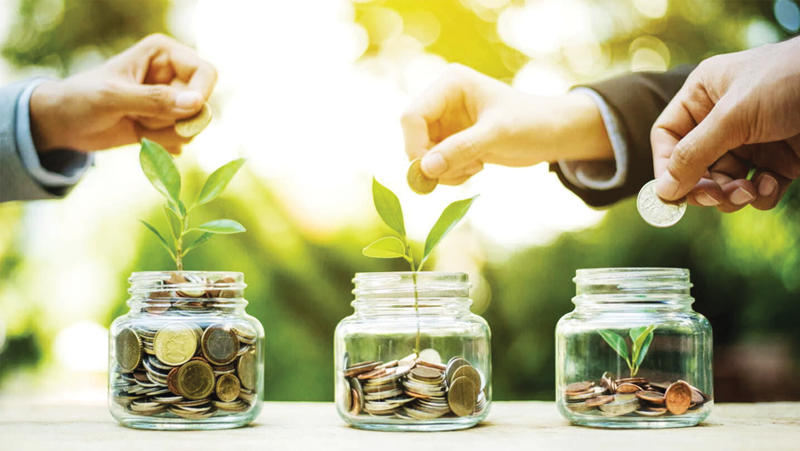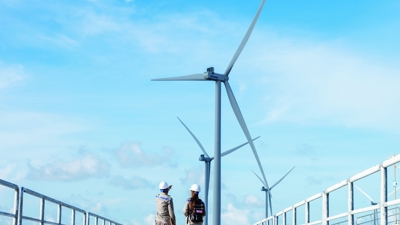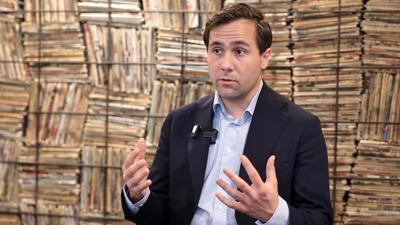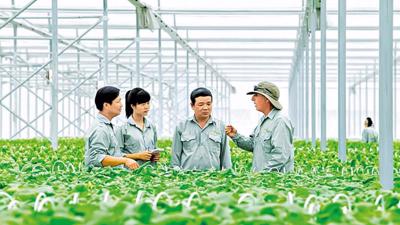On the path to green and sustainable development
Vietnam again won plaudits for its efforts in green growth, renewable energy, and the low-carbon economy.

With concrete efforts and tangible actions, Vietnam is boldly asserting its leadership on the path to green and sustainable development. As a proactive member of Partnering for Green Growth and the Global Goals 2030 (P4G), Vietnam stands out not just in its political commitment but also through remarkable real-world results, underscoring its dedication to a greener future for both the country and the world.
Today, Vietnam is recognized as a key player in the global green transition and sustainable development movement. The country is making strides forward in bringing these goals to life, with a series of actionable policies and innovative initiatives and by fostering deep, impactful partnerships with international collaborators.
At the 4th P4G Summit, hosted recently by Vietnam , Vietnam’s tangible progress in promoting green growth, advancing renewable energy, and building a low-carbon economy was once again lauded by the international community. These commitments and actions are not just shaping a sustainable future; they are laying the groundwork for a green transition that will drive Vietnam’s economic growth for years to come.
Proactively shaping a green future
The green transition trend is becoming an inevitable development direction, increasingly playing a pivotal role in the sustainable development strategies of countries worldwide. In this global wave, Ms. Amina Mohammed, UN Deputy Secretary-General, has highlighted Vietnam as an exemplary model in the process of clean energy transition and its pursuit of sustainable growth goals. Vietnam is not only proactively adapting to climate change but also creating a society centered on green development and comprehensive sustainable growth.
Specifically, Vietnam has demonstrated strong political will by committing to achieving net-zero emissions by 2050; a highly ambitious goal reflecting its responsibility to the international community. The country has also turned this vision into reality with the National Green Growth Strategy for 2021-2030, Vision towards 2050. The strategy sets a target for 2030 of reducing greenhouse gas emission intensity per GDP by at least 15 per cent compared to 2014, and by 2050 by at least 30 per cent compared to 2014.
Ms. Mohammed believes that thanks to these clear and practical steps, Vietnam has solidified its increasingly prominent leadership role in the global green transition. This role is not only evident in its strategic vision but also in the practical ability to implement, particularly in driving specific actions linked to green growth, social equity, and sustainable energy transition.
Notably, attracting green capital has become one of Vietnam’s key priorities. Despite the challenging global economic context, Vietnam continues to attract FDI of $2 to $3 billion each month, with a significant proportion of this investment directed towards green sectors and clean technology. “Vietnam is proving to the world that attracting investment in green growth is entirely feasible, even in times of uncertainty, and this is a positive and inspiring signal for developing countries,” she emphasized.
Simultaneously, the transition to clean energy has become one of the top priorities in Vietnam’s national development strategy. By the end of 2024, renewable energy was expected to have accounted for about 27 per cent of the country’s total electricity capacity, marking an important step forward in the journey towards sustainable development.
In light of these commendable efforts, Mr. Mathias Cormann, Secretary-General of the Organisation for Economic Co-operation and Development (OECD), said Vietnam, positioned as a leading renewable energy provider in the region, holds significant potential to strengthen strategic cooperation with global partners in the green sector. Positive changes are taking place not only in Vietnam but also spreading to many other countries, contributing to a global wave in the fight against climate change.
Moreover, Mr. Cormann noted that Vietnam has clearly demonstrated effective leadership by guiding all sectors of society to participate in the green transition, from large corporations to small and medium-sized enterprises (SMEs), and from urban to rural populations. This is achieved through specific policies such as simplifying administrative procedures, reducing initial investment costs for clean technology, and promoting access to green finance. “This is clear evidence that the Vietnamese Government not only provides guidance but also accompanies people and businesses on their green transition journey,” he stressed.
Strengthening public-private partnerships
In recent years, Vietnam has been building a solid development roadmap towards a green economy and sustainable development. The strong commitments and specific domestic actions demonstrate its determination to adapt to global challenges such as climate change, resource depletion, and environmental pollution. However, to make this journey more impactful and sustainable, promoting the public-private partnership (PPP) model plays a crucial role.
From a global perspective, Mr. Ani Dasgupta, President and CEO of the World Resources Institute (WRI), emphasized that each country has its own circumstances regarding development conditions, starting points, and unique challenges. Therefore, the green transition cannot apply a one-size-fits-all approach but requires flexible strategies that adapt to the realities of each nation.
In this diverse picture, one key commonality he highlighted as essential is the strong promotion of the partnership between the public and private sectors. This relationship is seen as a vital driving force to realize the green and sustainable development goals of every country, including Vietnam. “If I had to pinpoint a breakthrough factor for the global green transition, it would be the emergence of a new generation of collaboration, where governments and businesses share responsibility and co-create the future,” Mr. Dasgupta affirmed.
In practice, PPPs are not only an effective way to mobilize resources but also a strategic approach in shaping a green economy. According to Mr. Dasgupta, this model has proven effective in many developed countries worldwide and is particularly well-suited for developing nations like Vietnam, where public resources are limited, but the demand for investment in green infrastructure, clean energy, and environmentally-friendly technologies is on the rise.
“In particular, the State budget cannot bear the full cost of the green transition alone, while the demand for investment in green infrastructure, clean energy, and environmentally-friendly technologies is growing,” he said. “However, public policies can certainly create an attractive environment to unlock private capital and encourage innovation.”
Adding to this perspective, Ms. Mohammed emphasized that for the PPP model to reach its maximum potential, countries worldwide, including Vietnam, must establish clear mechanisms to drive it forward. This includes promoting the development of high-liquidity projects, increasing attractiveness among investors, building local capacity, and, most importantly, ensuring balanced benefits for all stakeholders.
She added that with the ambition of becoming a sustainable development leader, Vietnam stands before a golden opportunity to accelerate the green transition through creative collaboration models between the State and businesses. “Realizing PPP mechanisms will not only help Vietnam effectively utilize social resources but also expand its policy space, enhance competitiveness, and ensure balanced long-term development between the economy, the environment, and society,” she said.







